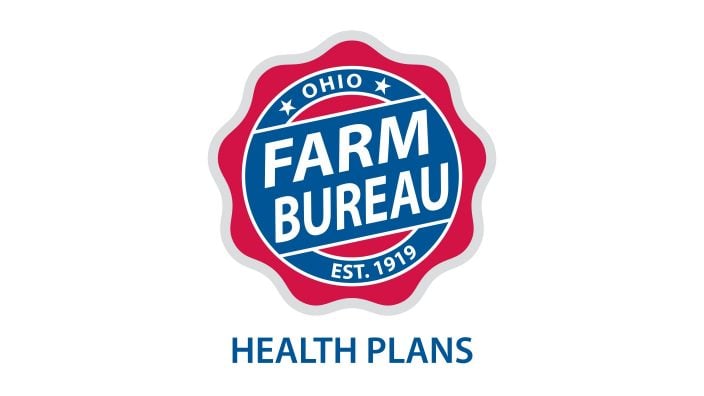Applications for Ohio Farm Bureau Health Plans now available
Members have three ways to apply: contacting a certified agent, calling 833-468-4280 or visiting ohiofarmbureauhealthplans.org.
Read MoreProperty tax bills are reaching mailboxes again, and in counties reassessed in 2017 landowners are already seeing the impacts of CAUV reform. Those counties are seeing a 30 percent decrease in their land values and similar decreases in their taxes, to the tune of thousands of dollars. The task that was before us at this time last year could not be overstated, but the power of Ohio Farm Bureau members once again proved to win the day.
Victories like CAUV reform can only happen with the collective strength of our membership. There is no doubt that these reforms would not have happened without the work of Ohio Farm Bureau. Now is the time to take advantage of those reform efforts.
This video explains the next steps for landowners. You can use it and the discussion guide below to assist in explaining the important value of Ohio Farm Bureau’s work.
The 41 counties on the 2017 reappraisal/update have now received updated tax bills with their new CAUV values. Some things to remember about CAUV reform:
The impact of taxes will vary significantly from taxing district to district:
CAUV reform is implemented on the three-year reappraisal/update schedule. This was necessary to ensure that the new provisions complied with requirements imposed by the Ohio Constitution on property tax laws.
CAUV reform has been a priority issue for OFBF for more than three years. What did it take to make it happen, and what are the results?
While we understand this is more extensive than required in the past, this is within the information the auditor is allowed to ask to ensure you qualify for CAUV enrollment, and is in part fulfilling the duty the auditor has to inspect properties each year to ensure they qualify.
Under CAUV reform, conservation lands are valued at the minimum CAUV value of $230/acre. Landowners must also provide additional information to the auditor to receive this lowered conservation value.
For Federal Conservation Program Land: The landowner must provide a map showing where the conservation land is located and a copy of the contract. These are mostly lands in programs like CRP, WRP and CREP.
For Conservation Practice Land (up to 25 percent of total acreage): The landowner must provide a map showing where the conservation practice is located. Landowners should also identify what the practice is, so the auditor can verify that it meets the requirements of the law.
If you receive the lowered conservation value, the land must remain in the practice for at least 36 months. If the practice is removed before 36 months, the landowner will be liable for recoupment equal to the difference between the conservation value and the actual CAUV soil value.
Remember, landowners in 2017 reappraisal/update counties need to amend their CAUV filings from last year by March to receive this lowered value for taxes they pay in 2018. Landowners should speak with their auditor as to how this will be handled in each county. Landowners in 2018/2019 reappraisal/update counties should begin certifying this acreage now, but the Tax Department has advised auditors that they cannot make the change to conservation value until the next reappraisal or update.
New CAUV legislation affects how land in conservation is valued.
OFBF Issue Updates: Expectations for 2018/2019 CAUV Reappraisals
CAUV reassessment is being phased in over three years across the state. Learn why and when you might see a change in your valuation.


Members have three ways to apply: contacting a certified agent, calling 833-468-4280 or visiting ohiofarmbureauhealthplans.org.
Read More

Bill Patterson, Cy Prettyman and Adele Flynn will continue to serve as officers for Ohio Farm Bureau Federation.
Read More

Delegates discussed many topics impacting agriculture including farmland preservation, local foods, and succession planning.
Read More

Twenty-six farmers govern the state’s largest farm and food organization.
Read More

The 2025 recipients are Fred Cooke (posthumous) of Richland County, Marvin Dietsch of Williams County, Steven Knollman of Hamilton County and Michele Miller (posthumous) of Ottawa County.
Read More

Nathan and Jill Parriman grow seasonal crops, including Christmas trees, pumpkins and cut flowers, providing U-cut experiences that invite customers to engage directly with agriculture.
Read More

The 2025 Distinguished Service Award recipients are Craig Adams, Mike Townsley, and Kellogg Farms, Kurt Farms and Stateler Family Farms.
Read More

Ohio Farm Bureau Treasurer Adele Flynn participated in the meeting, representing Ohio farmers.
Read More

For Ohio and PJM region, the outlook is reassuring—ample reserves and strong planning should keep the power on.
Read More

The average price for a classic holiday feast for 10 in Ohio will cost $55.87.
Read More